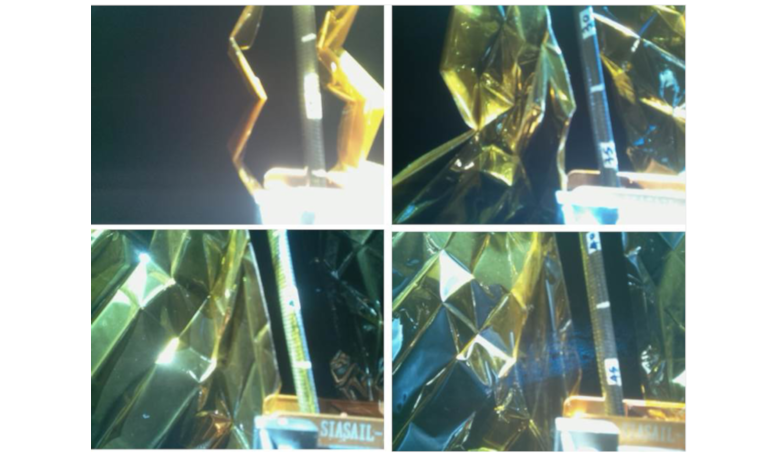Soaring through space propelled by little more than sunlight is a technical ideal that agencies and organisations are now exploring as a viable means of transportation. Last year, the Planetary Society successfully deployed its own LightSail 2; a craft with a huge 32 square metres (344 square foot) sail that is designed to orbit Earth using only the power of solar particles pushing on polyester resin sheets thinner than a human hair.
And now, China is doing the same. This week, the Shenyang Institute of Automation (SIA), a division of the Chinese Academy of Sciences (CAS) based in Northeast China's Liaoning province, announced that the nation’s first solar sail based craft, SIASAIL-I, is currently whizzing through the skies above Earth and is gradually spreading its sails.
Founded in 1958, SIA have been working on the design of a space flexible deployment mechanism since 2011.
Like its other LightSail companion in space, the solar sail is powered by the reflected light pressure of the sun on the spacecraft's unfolded membrane, therefore it does not rely on chemical fuel to get around.
As such, crafts of this nature might, for the foreseeable future, be the only type of vehicle that could reach far-flung targets on the edges of the Solar System.
Unlike LightSail 2, SIASAIL-I is a lot smaller. SIASAIL-I is a precursor mission aimed at testing a number of key technologies in orbit before the development of larger sails commences.
Consequently, the unfolded solar sail is only about 0.6 square metres, which is equivalent to the size of eight MacBook Air laptop computers placed together. The sail is so small, the deployment machine it was squeezed into was smaller than a billiard ball.
The whole payload was then packed into a 6U CubeSat configuration (1U is 10 x 10 x 10 centimetres) and launched in October 2018 on a Kuaizhou-1A rocket from Jiuquan. Sharing a ride with SIASAIL-I on the same rocket was another Chinese small satellite built by DFH Satellite Co. to test technologies for a future gravitational wave detector mission.
Tests on the sail will be carried out in two-stages says Liu Jinguo, deputy director of the SIA Space Automation Technology Research Office, who led the team in the design, technical verification and environmental tests of the solar sail.
For the first stage, the solar sail body is pushed out of the satellite platform and turned 90 degrees. So far so good as the diminutive package has returned data and photos to Earth showing that SIASAIL-I has successfully completed its objectives so far, which included tests on the micro-satellite deployment system, and flexible sail membrane material.
Currently in progress is the second stage, which involves erecting its masts and gradually spreading the sail.
More tests to verify the de-orbiting capability of the solar sail and to explore its potential application in space debris mitigation will be carried out at a later date.











